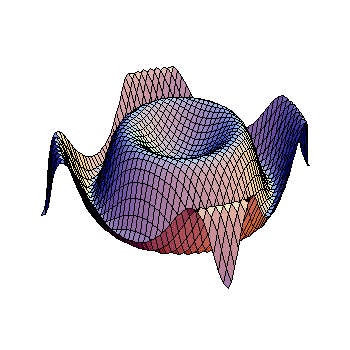Remember that # 1# #atm# #= 760# #mm# #Hg#, from there you have 3 methods you could use:
1) Use the "rule of three"
I'm not quite sure how you call that in English, but the concept is simple
#1# #atm -> 760# #mm# #Hg#
#0.320# #atm -> x# #mm# #Hg#
From there, multiply in a "cross fashion", i.e.:
#1# #atm# #*# #x# #mm# #Hg# #=760# #mm# #Hg# #*0.320# #atm#
#x# #mm# #Hg# #=243.2 # #mm# #Hg#
#x = 243.2#
2) Use a conversion factor
Since # 1# #atm# #= 760# #mm# #Hg# is an equality, it means that #(1 atm)/(760 mm Hg)# and #(760 mm Hg)/(1 atm)# equals 1, and as such, we can just multiply it by our valor and without changing it.
#0.320 atm * (760 mm Hg)/(1 atm) = 243.2 (mm Hg * atm)/(atm) = 243.2 mm Hg#
3) Use the conversion formula of linear scales
The conversion formula of all linear scales say "the ratio of the distance between your value and a set value and the distance between two set points is always the same regardless of scale", or, in simpler terms,
#(P_a - P_(atm))/(P_(atm) - P_(vac)) = (P_(H) - P_(Hg atm))/(P_(Hg atm)-P_(Hg vac))#
Where #P_a# is the pressure is #atm# and #P_H# is the pressure in #mm Hg#, throwing all values into the formula we have
#(0.320 - 1)/(1 - 0) = (P_(H) - 760)/(760 - 0)#
#-0.680*760 = P_H - 760#
#-516.8 = P_H - 760#
#P_H = 243.2#

